teniente_powell escribió:Ciencias Políticas.
Me temo que es más que arquitectura del yo, arquitectura del nosotros; o más aún del vosotros,o incluso del ustede vosotro ,si me apuras.
Aunque no da la sensación.

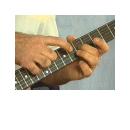


Max escribió:...sin entrar en el juego de que hay trabajos que -repito- son imprescindibles y necesarias las titulaciones para poder ejercerlas por su responsabilidad.



Contumaz de audio escribió:No se me ocurre cosa más dolorosa, frustrante y vejatoria que el trabajo, nuestra condena según la biblia.


Emilio Galsán escribió:Lo importante es poder fardar de OCIO. Pero la gente común aún no lo sabe. Soy un adelantado a mi época

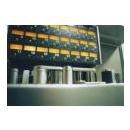
Alguien escribió:The concept of a Tonmeister dates back to 1946,[1] when Arnold Schoenberg wrote a letter to the Chancellor of the University of Chicago suggesting a course to train "soundmen". Schoenberg wrote "soundmen will be trained in music, acoustics, physics, mechanics and related fields to a degree enabling them to control and improve the sonority of recordings, radio broadcasts and sound films".[2] It was also in this year that the University in Detmold, Germany, started the first Tonmeister course
Alguien escribió:Six institutions (five European and one global) offer honors degrees that are called Tonmeister: the Universität der Künste Berlin (UdK) and the Hochschule für Musik Detmold in Germany; the Universität für Musik und darstellende Kunst Wien in Austria, the Conservatoire de Paris, the University of Surrey in the United Kingdom; and (as a post-graduate study) the SAE Institute in Oxford, UK and Byron Bay, Australia.

A800MKIII escribió:si no TONMEISTER

Alguien escribió:Si estoy a cargo de un proyecto para construir una subestación eléctrica y necesito un especialista, y contrato a alguien que se dice especialista, pero nada lo respalda, no tiene titulo que acredite que viene del mundo de la ingeniería eléctrica, pero me dejo convencer y lo pongo a ejecutar el proyecto y luego la subestación falla, hay muertes, en fin, la responsabilidad legal por sobre esas muertes, por sobre la indisponibilidad del servicio, nadie me la quita de encima. Me van a demandar y me van a llevar a la cárcel porque existen responsabilidades, en mi caso que no puedo endosar al "chanta" que contraté, por eso en el mundo laboral formal existe un gran filtro que no deja espacio a que ese planteamiento de auto denominarse lo que te plazca tenga validez.
Alguien escribió:"...Gibson comenzó en 1894 en su taller casero en Kalamazoo , Míchigan .
Alguien escribió:Por lo general estas personas no tiene la mas remota idea, ni están capacitadas en modo alguno para desempeñar ningún trabajo ,dentro de una grabación o espectáculo en directo, mas allá del de "te boy" o del de carga y descarga (con suerte) ya que en su formación no tiene conexión alguna con el trabajo a desarrollar.
Alguien escribió:O bien pones todo tu currículum, website y LinkedIn en inglés y puedes perfectamente poner "Recording Engineer".
Alguien escribió:Los estudios no son reglados u homologados por fastidiar al ciudadano, son precisamente para que esto no sea una feria donde cualquiera diga ser ingeniero, tecnico, doctor o maestro.
Alguien escribió:Bueno, el que quiera ser ingeniero de grabacion, mezcla o mastering pues que lo sea. Al fin y al cabo, graba cualquiera, mezcla cualquiera y masteriza cualquiera.
Alguien escribió:En total, si todo va bien ser Ingeniero en mi pais y en el vuestro cuesta 5 cursos y medio.
Alguien escribió:Lo importante es poder fardar de OCIO.
Alguien escribió:Yo me la paso bastante bien en mi trabajo
Alguien escribió:...y luego está el saber disfrutar de la vida, con dinero o sin dinero.....
Alguien escribió:De hecho la carrera asociada al sonido (históricamente) no se denomina Ingeniería si no TONMEISTER


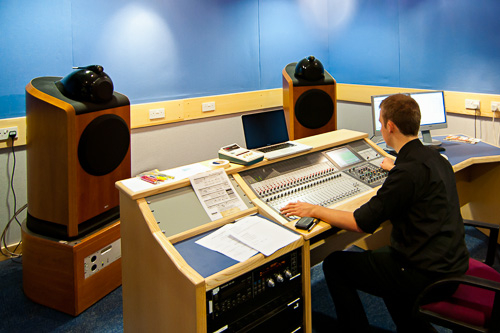
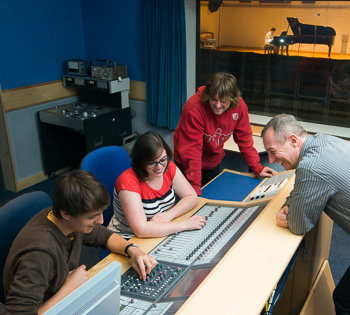
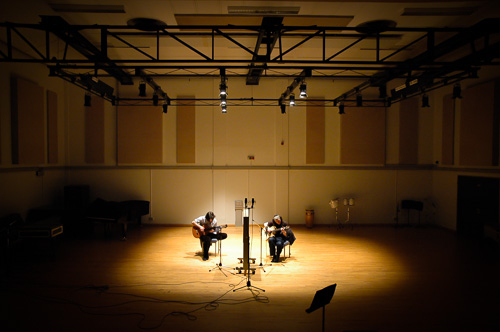
Alguien escribió:The control room acoustics were designed by Nick Whitaker (whose other work includes Angel, British Grove and De Lane Lea). The equipment has been selected because it is representative of that used in classical recording. It includes a 48-channel Sony DMX-R100 console, Lexicon 480 reverberation, B&W Nautilus 801 monitoring, and the Pyramix digital recording / editing system. Hence, the control room can be used for recording to stereo or multitrack formats, for multitrack editing, or for mixing pre-recorded sessions.
 ](*,)](https://statics.soniccdn.com/images/smilies/eusa_wall.gif) )
)
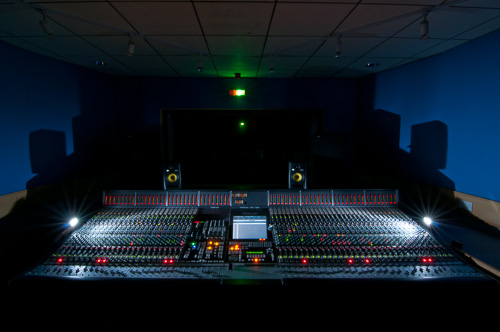
Alguien escribió:
Studio 2 has been designed predominantly for 'pop' recording. The studio floor is acoustically treated to be 'deader' than Studio 1, to limit the recorded reverberation and to allow for greater separation between the instruments. This allows greater flexibility and creativity when it comes to mixing tracks recorded here. It is 60 square metres, which is sufficient to record a large band (in fact 20-piece big bands have been recorded in there).
The control room is designed to be typical of a pop studio. The acoustics have been designed by Nick Whitaker (whose other work includes Angel, British Grove and De Lane Lea). The hub of the studio is a 56-channel SSL 9000K series console (the likes of which you'll also find in Abbey Road Studio 3, Metropolis Studio A and Real World Studios).
Students can record to a range of recording devices in studio 2, including an Otari 2" 24-track analogue tape machine with Dolby SR, a 48-track Tascam hard disk recorder, or to ProTools HDX or Logic. This room also includes Lexicon 480 reverberation, a range of outboard processing equipment, ATC SCM100 monitoring, and stereo digital (DAT & CD) recorders.
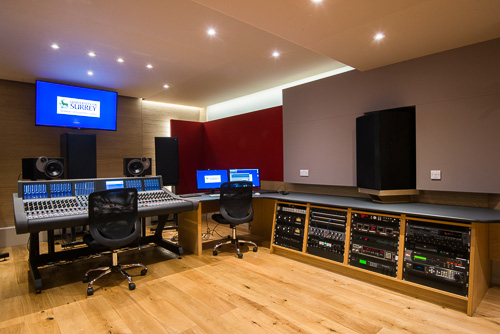
Alguien escribió:
Studio 3 is used primarily for mixing recordings made in the other studios. However, it has a small overdub room for adding additional parts to recordings, and has connections to all the other studios so that recordings can be made directly from any of these facilities.
The studio was refitted in the summer of 2013, with an acoustic redesign by John Flynn and Sam Toyoshima of Acoustics Design Group (whose other work includes Abbey Road and SARM West studios).
The refit included a new console - an AMS-Neve 88D was chosen for its high quality and similarity to a range of consoles commonly used in industry. The control surface, processing modules, and internal architecture are similar to the AMS-Neve DFC Gemini consoles that are commonly used in high-end dubbing theatres for film sound (such as De Lane Lea, Goldcrest, and Skywalker Sound). The automation is similar across all AMS-Neve consoles, such as the 88RS (found in Abbey Road, Air Lyndhurst, Sphere, and Ocean Way studios).
The studio is set up for mixing in stereo and 5.1 surround sound, and includes a 5-channel ATC monitoring system with Genelec subwoofer.
There is a range of outboard processing in this studio, including Bricasti, Focusrite, SSL, Thermionic Culture and TC Electronic units. There is a Studer A80 2" 24-track analogue tape recorder with Dolby SR to allow transfer of material from Studio 2 as well as an Apple Mac Pro running ProTools HDX and Apple Logic (with 48 MADI i/o channels). Pyramix is also available to enable mixing of work recorded in Studio 1.
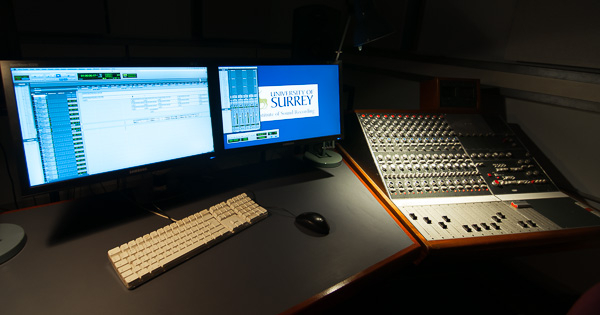
Alguien escribió:The edits rooms are used for a wide range of audio post-production tasks.
Studio recordings of classical music are usually made up of a number of takes, that are later edited together. All three edit rooms have Pyramix Native, which is designed specifically for this type of work.
Increasingly, pop music recordings involve significant editing, from correcting the timing of rhythm parts, to tuning vocals. In addition, students often mix at home using their own DAW systems such as Pyramix, ProTools or Logic. To enable this type of work, all three edit rooms have Pyramix Native, ProTools Native and Logic, and edit rooms 1 and 2 have fader controllers to assist with mixing.
The edit rooms are also frequently used for post-production audio work for film and TV. This includes sound effects and Foley editing, speech editing and ADR fitting, and creation of pre-dubs. One example of this is the audio post-production coursework which involves editing the location sound and ADR from a pre-recorded television shoot, and adding appropriate music and effects.
In addition to these facilities, edit 3 houses a 12-channel Neve Melbourn console, which allows mixing of tracks or stems via a classic analogue console, as well as a range of 2-channel recording and replay devices such as 1/2" analogue reel-to-reel, cassette, DAT, and CD recorders, and a Technics turntable. Edit 3 also includes a SADiE DAW, commonly used for mastering and editing for broadcast.
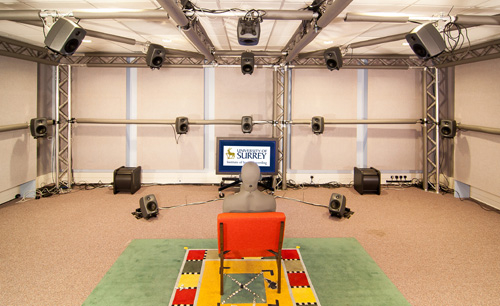
Alguien escribió:The ITU-R BS.1116 critical listening room and audio laboratory (designed and built by Munro Associates) are used by students and researchers to undertake experimental work involving audio measurement and subjective listening tests.
Alguien escribió:
A question of specification
There are various standards that specify the acoustics of listening spaces. For instance, IEC 268-13 attempts to be representative of a domestic listening space, and specifies the room dimensions, reverberation time, and background noise levels. Another example is ITU-R BS 1116, which is a more critical specification, and specifies room size, background noise, room proportions, reverberation time, frequency response, early reflections, and late energy characteristics. However, even rooms that meet these specifications can sound very different. Our listening room meets ITU-R BS 1116, principally using absorption. I've also experienced another listening room that meets the same specification mainly through the use of diffusion instead. They both meet the specification, but they sound very different.
So the first difficulty is how you specify a room: what factors are important, and what specification should it meet? At the moment, there is no 'ideal' specification, and there are certain things that we measure to characterise a room, but these don't cover all relevant aspects of our perception, and aren't directly related to what we perceive.
A set of compromises
The optimisation of the acoustics of small rooms is a complex topic. Unlike large room acoustics, ray-based analysis isn't relevant for a significant fraction of the frequency range. Instead, we're dealing with modal responses that can be more difficult to predict. There are also many factors to play off against each other, and partial treatment can sometimes make things subjectively worse.
Take, for example, a single reflective surface. If this surface produces a perfect specular reflection (like a mirror), then the combination of the direct sound and reflection at the listening position will cause comb filtering (a series of cancellations at frequencies that are numerically related). These cancellations each will cover a very narrow frequency range, with the spacing between them determined by the time of arrival difference between the direct and reflected sound.
If the surface is now treated (using absorption or diffraction), the amount of cancellation can be reduced (the 'depth' of the notch will be less). However, this will often be at the expense of 'widening' the notch. So what is worse, a narrow and deep notch, or a shallow and wide notch? The answer is probably: 'it depends'.
A question of experience
So how does an acoustician deal with all of this complexity and compromise? A good understanding of acoustic theory is obviously important. But experience is also essential. Over years of designing studios, an acoustician can refine their techniques, identify likely solutions to problems, and also learn from their mistakes. As one experienced acoustician told me: "the acceptance testing at the end is not for this project's benefit, but so I can learn for future projects".
It's likely to be because of this combination of complexity, compromise, and experience, that acousticians seem to rely on tried and tested overall design types. One may favour absorption at the front of the room, and diffusion at the back of the room. Another may favour directing early reflections away from the listening position. Another may favour a reflective front part of the room and increasing absorption towards the back of the room. Yet another may favour significant absorption all round.


Regístrate o identifícate para poder postear en este hilo